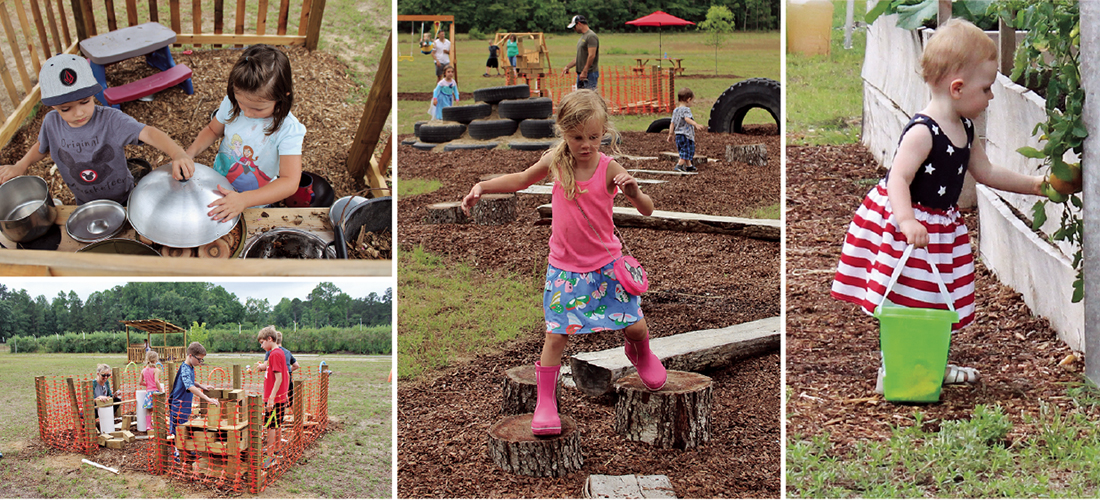The Life Electric
Recalling encounters that were too close to Nature’s fury
By Tom Bryant
In the far distance, down around Camp Mackall, I could hear thunder boomers, or maybe troops practicing with their howitzers. Our weather had been unseasonably cool for a couple of days as a Canada cold front brought in lower humidity and temperatures. I was backed up in the pines bordering a milo field, kicked back on the tailgate of the Bronco at the little farm in the southern part of the county that I lease for bird hunting. It’s one of my favorite spots. Linda, my bride, calls it my escape place.
Thunder became more prevalent, and I watched as giant cumulus clouds rose skyward at a storm’s pace. They were outlined in white from the sun but were an ominous grey, almost a black color deep in the interior. This is going to be some gale, I thought as I watched the clouds become wider and more pronounced. Lightning was skittering across the top, adding a real threat to the storm. It was too late to head home, so I decided to ride it out away from the taller trees and moved the Bronco back in a stand of smaller pines.
The whole southern sky was now a boiling grey mass of rolling clouds, moving north. I had just enough time to roll up the windows and close the back gate before big drops of rain splattered the little vehicle. I climbed in the passenger’s side and had just shut the door when a huge lightning strike illuminated the shadows of the pines like a flash bulb. It was almost simultaneously followed by thunder that seemed to rock the truck. That was too close, I thought, and I watched as a dark grey sheet of rain headed my way, shutting down visibility. From then on, it was a thunder and lightning show.
I’ve had some close calls with thunderstorms and have been extraordinarily lucky a couple of times, so no one respects the power of lightning more than me. As rain hammered the little Bronco, I thought back to a narrow escape I had several years ago. It was the early part of dove season, and I was hunting along a tobacco field where I noticed birds that were picking up sand grit for their craw. I parked the Bronco on a small hill overlooking the area and walked around the tree line to a wooded point anchored by a giant white oak. The spot was bordered on both sides by tobacco and gave me a great view of both fields.
It was a little after 2 o’clock, and I had promised Linda that I’d be home in plenty of time to get ready for a dinner invitation that evening. Over the hills toward the north, I could hear the first ominous sounds of thunder, so I decided to skirt around the closest field to see if I could jump a few birds before calling it a day. A pond anchored the south side of the farm, and my plan was to make a circle around the field, starting at the pond, ultimately ending my walk back at the truck.
A dirt road a little wider than a car bisected the two fields and I came out on the south end, about a mile from my vehicle. Black clouds outlined the northern tree line, and I could see flashes of lightning and hear thunder as the storm headed my way. I decided to cancel the hunt and picked up my pace as I walked toward the Bronco. A few drops of rain hurried me along.
Suddenly, a dove jumped up in the field on my left and I dropped it in the tobacco. Paddle, my little yellow Lab and long-time hunting companion, had died the winter before at the age of 14. I missed her tremendously. She would have found the bird and had it back to me in no time, but now I had to be the retriever. I angled in the field to look up and down the rows of head-high tobacco.
I spotted the dove and hurried to it so I could hopefully beat the storm to the truck. I had just picked up the bird when I had the weirdest sensation. Hair on my arms and the back of my neck seemed to stand up, and the sky became bright under the lowering clouds. Instinctively, I knelt and laid my shotgun down as if I knew what was coming. The gun and I had just hit the ground when a deafening crash of lightning and thunder shook the field. For a second, I was stunned, and then I grabbed the gun and the bird and hustled to the truck in a downpour that drenched me as if I had jumped in the pond.
The next day I rode back out to the farm and found that the white oak tree on the point of land where I began the dove hunt was where the lightning hit. There was a strip down the tree about a foot wide where bark had been slashed in the lightning strike. The spot where I knelt down in the tobacco field was about 90 paces from the tree.
Another run-in with lightning occurred when a good friend and I were paddling the Haw River right below the new dam that would eventually back up waters to form Jordan Lake. It was the beginning of an epic adventure; but as they say, that’s another story for another time. We had just portaged around the dam and were heading down river to where the Deep and the Haw rivers form the Cape Fear River. Right beyond the dam, the banks of the Haw were steep from lake construction, and we were in a hurry to get where we could exit the river because a storm was coming. We didn’t make it. We were on the river in a Grumman aluminum canoe when thunder and lightning began in earnest. It was raining so hard we had to bail water every now and then. Lightning was striking all around us and all we could do was hold on to the brush on the side of the bank and keep our fingers crossed. It worked. Mother Nature decided to let us make it through the storm and continue our trip.
That was close call number two. I hope I don’t have a number three.
In a bit, I drove out to one of the old barns on the farm to use the shed for a refuge. I got a drink from the cooler and a pack of nabs and my dove stool and found a dry corner. It was comfortable under the barn overhang, and I watched as the grey clouds seemed to be getting lighter. Thunder grumbled to the north of the little farm as the storm moved and a steamy haze rose off the fields, promising a return to summer heat. I decided to pack it in for the day. I put my stuff in the truck and fired her up.
The U.S. has a yearly average of 47 fatalities of people struck by lightning. I’m lucky not to have added to that statistic, and I think about that every time I hear the distant rumble of thunder. PS
Tom Bryant, a Southern Pines resident, is a lifelong outdoorsman and PineStraw’s Sporting Life columnist.












